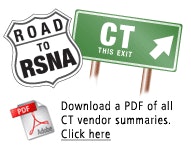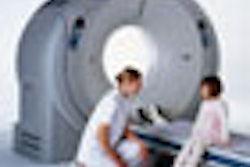As the multislice CT market continues to mature, major vendors are developing refinements to these powerful systems that address specific needs, with the most promising applications ranging from cardiac CT angiography to lung screening to virtual colonoscopy. Meanwhile, concerns about multislice CT's impact on radiation exposure and facility workflow are leading to advances in these areas as well.

With the jury on CT lung screening still out, none of the major healthcare organizations has endorsed the use of CT screening for lung cancer, and reimbursement rears its ugly head as no third-party insurers will pay for these scans. Look for research to continue until a clinical consensus develops.
The balance is shifting in favor of CT screening for another cutting-edge clinical application, virtual colonoscopy. The technique began receiving additional attention following the announcement in September 2007 of favorable results with the procedure versus the gold standard, optical colonoscopy. Industry observers hope the positive results could lead to the inclusion of virtual colonoscopy in screening guidelines from major academic and public health organizations, which could in turn open up the reimbursement floodgates for VC from third-party and national payors in the U.S.
When it comes to CT angiography, concerns over radiation exposure have moved front and center. A report that appeared in July 2007 in the Journal of the American Medical Association raised the issue of imaging young patients, with concern about lifetime radiation exposure given repeated scans. As some industry observers have pointed out, a child with a congenital cardiac anomaly could potentially be scanned a dozen or more times over a lifetime. Vendors have worked to address these concerns, especially for the benefit of those patients who require serial scans and the youngest of all scan recipients.
At the 2006 RSNA show, several vendors presented dose-reduction techniques, and at this year's meeting look for them to demonstrate both refinements and clinical results backing their technologies. And while big-iron systems may steal attention, niche-market CT scanners are making inroads for specific applications, boldly going where the big iron can't fit.




















